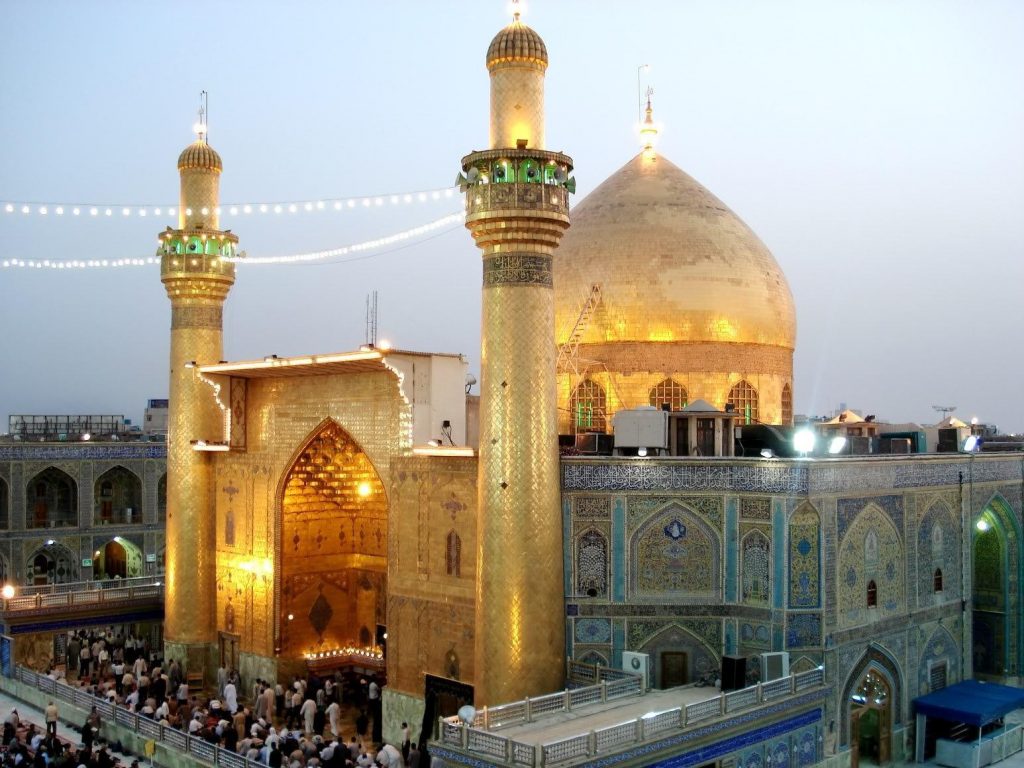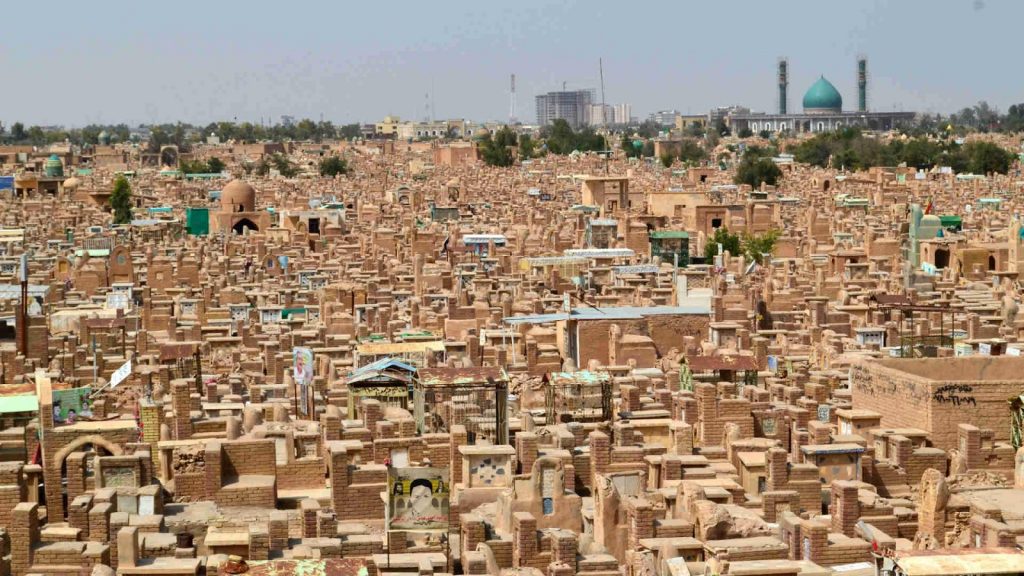by Andy Khong
Karbala is a city located about 100 km (62.5 miles) south-west of Baghdad. It is one of Shite Islam’s holy cities best known for the Battle of Karbala in 680 CE, and for the shrines of Husayn and Abbas.
After the death of the Prophet Muhammad, a dispute ensued over who should take his place as leader of the faith as the Prophet had not named a successor. The majority believed that the leader should be elected from among those most capable; while others believed that direct descendants of Muhammad were the only rightful leaders. This political difference split the followers of Islam into Sunni, and Shite.
Most of the prominent Muslims (Sunni) elected Abu Bakr, the Prophet’s closest advisor and friend to be the 1st Caliph (Caliphate is an Arabic word meaning succession, and a title given to those who assume the mantle of spiritual and political leader after Muhammad). Other Muslims (Shite) argued that the Prophet had designated his son-in-law and cousin Ali as his successor. The first four Caliphs after Muhammad (in sequence) were Abu Bakr, Omar, Othman, and Ali. The first four Caliphs (called the ‘rightly-guided’ Caliphs) used their mission to create an equitable society, believing in Allah, avoiding evil, and ensured that their immediate families did not benefit from their positions.
Ali eventually became the 4th Caliph (1st Shite Iman), but his reign was short and he was assassinated inside a mosque in 661 CE. His eldest son Hasan was elected Caliph (2nd Shite Iman) in Kufa, a garrison town near Najaf. Upon hearing the news of Hasan’s election, the Governor of Levant (Syria today), Muawiya (who fought Caliph Ali in the 1st Muslim Civil War [656–661]), marched on Kufa with his army, and a wounded Hasan ceded the Caliphate. Muawiya then established himself as the 1st Umayyad Caliph and the dynasty ruled over the region (Middle East to North Africa) from 661 to 750 CE.
Few years before his passing, Muawiya arranged for the succession (regarded as a contentious act by prominent Muslims) of his son, Yazid 1 to be the next Caliph through flattery, bribes, and threats but he was not able to secure the pledge of allegiance from some Muslim notables like Husayn, the younger brother of Hasan, who believe in the principle that leadership could not be inherited, and people had the right to choose their leader to avoid dynastic rule.
Husayn was regarded by Shite Muslims as the 3rd Caliph (Iman), a leader whose relationship as grandson of Prophet to Muhammad gave him special status and authority. The people of Kufa invited Husayn to lead them in a revolt against the Umayyad Caliph based in Damascus. When Yazid 1 (then 2nd Umayyad Caliph) found out about this plot, sent his forces to put down the unrest in Kufa; then at the lopsided Battle of Karbala (10th October 680), 4,000 Umayyad soldiers massacred Husayn and his men (believed to be a total of 72) on the desert plains of Karbala. Husayn and his men have been regarded as martyrs by both Sunni and Shite Muslims since. Among those killed were Husayn’s half-brother Abbas, and his six month old son Ali Asghar. After Husayn’s death, a tomb was built which attract millions of pilgrims to Karbala to observe ‘Ashura’ (commemoration of Husayn’s death).
Shrine of Abbas, Karbala
Najaf is a city about 160 km (100 miles) south-west of Baghdad, and 79 km (49 miles) from Karbala. It is a pilgrimage centre well-known as the burial site of Ali, who is Prophet Muhammad’s son-in-law and cousin. Najaf is the 3rd most visited holy site for Muslims – Makkah (Mecca) and Madinah (Medina) in Saudi Arabia are the two other cities that receive more Muslim pilgrims. Ali is recognized by Sunnis as the 4th Caliph, and by the Shiites as the 1st Iman. He is the father of Husayn, and Abbas who were martyred at the Battle of Kabala.
Walking distance from the Shrine of Ali is Wadi al-Salam, which in Arabic means “Valley of Peace”. This is the burial place for Ali, Adam* & Noah*, plus a staggering 6 million people – making this the world’s largest cemetery [*according to ‘hadiths’ = accounts of the words or practices of Prophet Muhammad]. Many pilgrims believe that to be buried close to Ali, ensures that on Judgement Day, Ali will appeal to Allah on their behalf to enter “Jannah” (Kingdom of Heaven).
Burial Chamber of Ali, Najaf

Shrine of Ali, Najaf

Wadi Al-Salam (Valley of Peace), largest cemetery in the world (6 million bodies), Najaf


Female dress code for going to Shrines/Mosques in Iraq
Unlike Makkah (Mecca), non-Muslims are permitted to go to all the holy cities, and enter places of worship in Iraq. For further information on tours to Iraq





